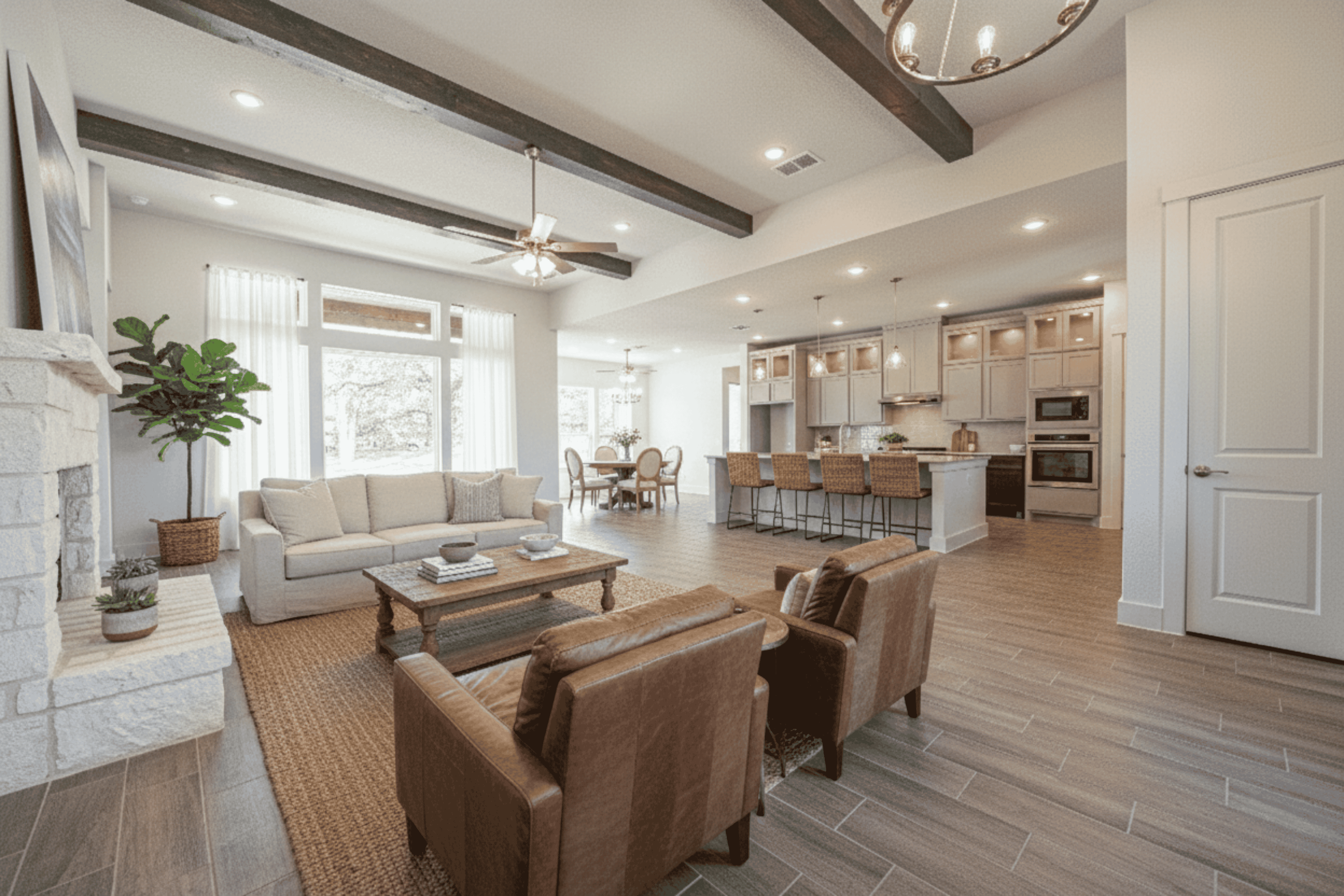
Is the Open-Concept Floor Plan Still King? (A Look at Modern Layouts)


For two decades, the open-concept floor plan reigned supreme. We tore down walls, merged kitchens and living rooms, and celebrated the free flow of light and conversation. It became the default for modern living, promising togetherness and expansive visual space.
But after years of living, working, and schooling from home, many homeowners are asking a crucial question: Has the open-concept floor plan reached its limit?
The short answer is: It’s evolving. The "King" hasn't been overthrown, but its kingdom is now being divided into smarter, more functional territories. Welcome to the era of the "Broken Plan."
The Reign of the Open-Concept: Pros and Cons
To understand where we're going, we need to appreciate the appeal of the open layout.
The Perks of Open-Concept:
Social Flow: Perfect for entertaining, allowing the host to cook and socialize simultaneously.
Visual Space: Makes smaller homes feel larger and brighter by eliminating barriers.
Flexibility: Allows furniture to define spaces rather than fixed walls.
The Drawbacks We've Learned:
Lack of Privacy: The primary issue. No place to escape noise, visual clutter, or other family members.
Noise and Clutter: Sound carries everywhere, and there is no door to close on a messy kitchen.
Temperature Control: Can be harder to heat or cool one massive zone efficiently.
The Zoom Background Problem: Finding a professional, quiet space for a video call is nearly impossible.
The New Monarch: The "Broken Plan" Layout
The "Broken Plan" is the design philosophy of the future. It maintains the spacious feel and light flow of open-concept living while cleverly introducing elements that provide separation, function, and acoustic dampening.
Here are the key elements replacing—or refining—the fully open floor plan:
1. The Defined Kitchen
The most significant change is in the kitchen. Homeowners still want a connected kitchen, but they're building in separation:
Hidden Kitchens (The Scullery/Pantry): A trend where the main kitchen is stylish and social, but a nearby walk-in pantry or scullery holds the mess, small appliances, and the bulk of the prep work. This lets you close a door on the chaos.
Half-Walls and Architectural Screens: Instead of a full wall, designers use three-quarter walls, floor-to-ceiling shelving units, or slatted wood screens to subtly delineate the kitchen from the dining area without blocking light.
2. The Return of the Pocket Room
The pandemic highlighted the need for dedicated, private spaces. We are seeing a return of rooms with doors, but with a modern twist:
The Flex Room: This isn't your parents' den. It's a multipurpose space—a home office by day, a guest room by night, or a library/music room on weekends. Crucially, it has a door.
Dedicated Offices: Essential in today’s work culture. These rooms are built for acoustics, proper lighting, and strong Wi-Fi, offering a professional separation from home life.
3. Architectural Zoning
For the main living spaces, designers are using architectural cues to imply separation where walls don't exist:
Level Changes: Stepping down a stair or two into the living room creates a feeling of a separate, cozy zone.
Ceiling Treatments: A tray ceiling, a dropped beam, or a change in ceiling height visually marks the transition from the kitchen to the dining area.
Flooring Changes: Switching from warm wood in the living room to patterned tile in the entryway or kitchen provides clear, functional boundaries.
The Final Verdict
Is the open-concept floor plan dead? Absolutely not.
It remains the gold standard for promoting light and connection. However, the all-or-nothing approach is over. The modern homeowner wants the best of both worlds: the spacious airiness of an open layout, paired with the practical, comfortable privacy of defined rooms.
The future of floor plans is intelligent segmentation—designing spaces that can breathe when you entertain but can also offer a quiet corner when you need to simply close the door.
Let's chat about your dream home design. Contact us today!



